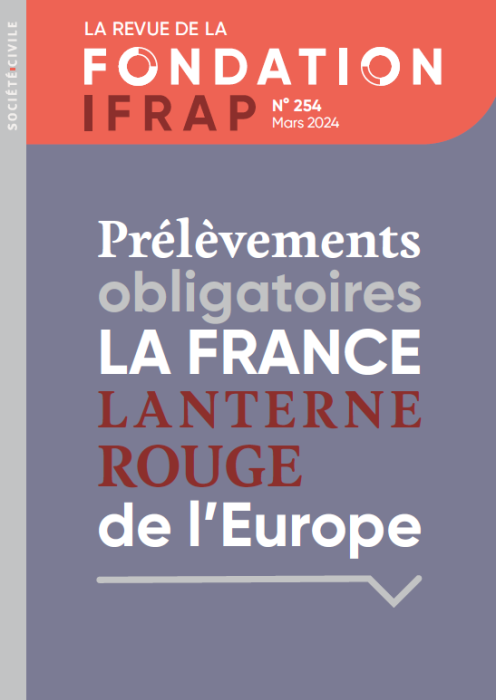Gazelle Companies

The term of gazelles was first used around the 1980s by David Birch, a researcher at MIT and the inventor of business demography, to refer to young fast growing companies.
The term has been taken over by iFRAP in its reports to the Ministry for SMEs (Small and Medium size Enterprises) in 2002 on the role of gazelles in job creation and later in a study published in 2003-2004 (Angels and gazelles). The Ministry for SMEs quickly adopted the term, as did Renaud Dutreil, the Minister of SMEs, who in 2006 had a tax law voted to encourage the development of gazelles in France. Gazelle has since become the common term for young high-growth companies.
Statistical characteristics and role of gazelles
In the study “Angels and Gazelles,” we defined a gazelle as a company whose capital is at least 100,000 euros at the start. It is in fact possible to set up businesses with much less, but those are not companies designed to create employment (e.g. self-employed persons or web-based small businesses). Those companies with the goal of reaching a national or even international market fast cannot start without employees, or without the necessary funds to run the company for at least a year. Eventually, the company's sales revenue or the contributions of venture capitalists allow it to run on its own, but the start-up capital is essential.
The figures obtained from research showed that a French Gazelle is on average created with 800,000 euro of equity capital and 13 employees, while a British Gazelle is created with twice the capital and twice the number of employees.
The role of gazelles and one-person businesses in job creation
The Chirac government was very proud to have helped create several new businesses, including the creation of the company with the capital of 1 euro.
It is true that in the period from 2003 to 2007, the number of new firms has increased considerably, from 240,000 businesses to 322,000 businesses. But if we distinguish the companies created without employees from the companies with employees, we notice that the latter group has not increased, and has even slightly declined.
Gazelles, businesses created by opportunity rather than necessity : the GEM study
The Global Entrepreneurship Monitor, formed by cooperation from Babson College in Boston, one of the best American schools to train entrepreneurs (30% of students would create their companies) and the London School of Economics, with financial support from the Kauffman Foundation, has conducted the first international study to try to measure the level of entrepreneurship in more than 40 nations of the globe.
Surveys done in each country by a team of experts measured the number of individuals who undertook building a start-up to create their own job (case of the self-employed person). These companies are created out of necessity. Gazelles, which are companies launched based on a project to create a product or service, are companies created by chance and opportunity. These surveys confirmed that France is very well placed in terms of businesses created out of necessity, but occupies a tragic ranking in terms of businesses created by opportunity.
The companies created out of necessity create in total very few jobs
It is striking that the many programs destined to help the unemployed to work by creating their own business have not changed much about employment in France. The employment rate tragically remains around 63% of the population at working age, while the unemployment rate remains around 8 to 9% regardless of crisis periods. Examples include the programs EDEN, ACCRE, ADIE, and “self-contractor.” (auto-entrepreneur)
In reality, before rejoicing in the success of these employment programs for the unemployed, it should first be observed whether or not the creation of these micro-enterprises, often shops or craftsmen, result in the disappearance of an equal number of shops and artisans. It becomes a valid question when a street already has two or three bakers. A closer examination of employment in the field of artisans and liberal professions in France translates itself at best into a non-fluctuating total of employed staff, and at worst by a steady decline.
Why gazelles are the key to employment and unemployment
Employment in a country is organized around a few very large companies and SMEs destined to become large companies, which are serviced by utilities companies for most of their food service, cleaning, etc.
The characteristic of a gazelle and of SMEs and later of large companies that succeed them, is to introduce a product or a service that does not yet exist. That new product or service sometimes competes with and replaces existing products or services, but will more often meet needs that had not been met before : examples that come to mind include photography, reprographics, washing machines and, of course, the Internet and the infinity of new services and advantages it brings.
In other words, individual companies offer a local service that comes to compete with and supplant existing services, whereas a gazelle brings forth a new service or new product whose value adds to the value of entire industry and doesn't just act as another substitute. In addition to the direct jobs it creates, a gazelle creates indirect jobs since it requires services for maintenance, cleaning, catering, transportation, etc.
We can thus quantify directly the contribution of gazelles in direct employment in the UK during the time period of 1980 to 2000 at about 120,000 jobs per year, with probably 80,000 indirect jobs being created in parallel. This would have enabled France to catch up on its lack of private sector jobs if it had replicated the same.
Gazelles, the revival of large companies
A gazelle is basically intended to grow fast on its own, but most gazelles will merge with others or will be absorbed by bigger companies.
The most effective method of magnification and survival for big businesses such as IBM, Microsoft, etc. is to absorb external gazelles that can bring them a renewal in their portfolio of products or services that they are unable to create themselves. For example, Cisco eats up more than 10 companies per year. All major companies have established offices designed to identify promising targets.
Funding gazelles
The financing of gazelles is one of the most poorly understood of the economic world. Some believe that banks must finance their startup ; others believe that the funds should come from venture capital. However, the truth is that neither one can finance a gazelle.
The beginning stage of what may later become a successful business is the riskiest part of the life of a company, because it must exceed the equity gap. Once the company has taken off, has started selling, and can produce accounts of its first results, outside investors, such as aforementioned venture capital companies, may become interested.
But it was in 1958 that the U.S. Congress found that it was not the role of venture capital to finance the first steps of a start-up, since the risk is too high even for venture capital, and the amounts needed are too low to justify venture capital investments (whose usual minimum is around 2 million Euros or dollars). Below venture capitalists, business angels are the only ones able to successfully fund a start-up, since they are wealthy individuals investing their personal funds. Lately there has also been an emergence of micro-finance companies called SBICs (Small Business Investment Companies).
The US Congress created these two categories of financiers in 1958. When they created the SBIC, they also created the Subchapter S corporation - a corporation of fiscal transparency that is for the most part responsible for the emergence in the U.S. of approximately 1 million business angels annually investing in amounts exceeding $100 billion, if one relies on the only serious study of American Business Angels published in 1988 by Robert Gaston (“The informal supply of capital”).
The model of Subchapter S has been adapted into French law in 2008 with the SCT (“Société de capitaux transparente fiscalement” combining the shareholder responsibility limited to his shareholding with direct taxing in his hands of profit and losses of the SCT).






